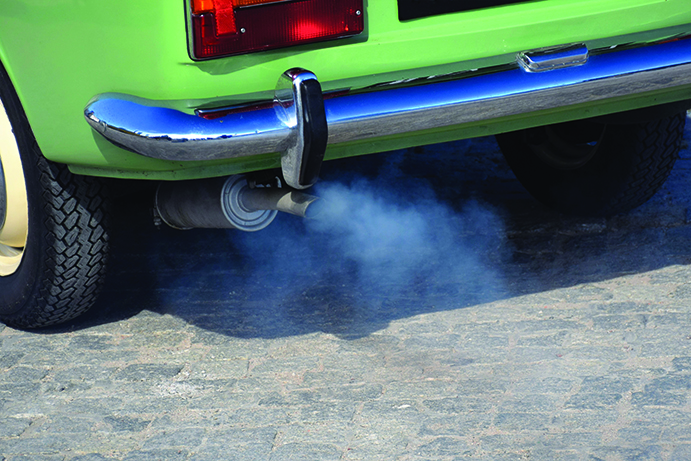
Prof Mark Jolly, head of the Sustainable Manufacturing Systems
Centre at Cranfield University, says that as the death knell sounds for diesel and petrol cars, we’re not getting the full story on the energy and environmental costs of their successors
Why don’t we have energy rating labels for our cars and other vehicles?
We think we already do — via the checks on tailpipe emissions and CO2 that are backed up by government legislation and the car manufacturers themselves, with the latter always looking for ways to reduce emissions via lower fuel consumption. So it’s all good.
Except this single measure, used around the world as an indicator of what constitutes
an environmentally friendly motor vehicle, is a snapshot. Just in itself, it’s misleading for consumers, governments and societies as a whole. Worse, it’s exactly this focus on tailpipe emissions that has the potential to drive up CO2 discharges, given that the number of cars worldwide is expected to double to two billion by 2035.

At Cranfield University’s Sustainable Manufacturing Systems Centre, we’ve looked at
what the push for lower tailpipe emissions has meant, such as more lightweight vehicles with aluminium engines. Less fuel is used and emissions are lower – but what about all the energy required to manufacture the lighter engines? It’s a disturbing picture of hidden environmental costs and damage.
The production of each aluminium cylinder block consumes 1.8 to 3.7 times more energy than the production of a block in cast iron. The nearly twofold increase in energy consumption occurs when the aluminium components are produced in reusable metal moulds, referred to as high-pressure die casting. The almost-fourfold energy increase results when the aluminium cylinder blocks are produced by sand casting; where the components are created in expendable sand moulds.
Overall, more than 70 per cent of global aluminium production is based on fossil fuels. Under these conditions, the energy-intensive production of aluminium generates more than 10kg of CO2
per kilogram of aluminium. That means a typical aluminium car would need to be driven for between 185,000km and 560,000km before there were any environmental benefits from the lower fuel use involved. The average life expectancy of motor vehicles is only 210,000km, so the majority of cars aren’t helping the environment – they’re just increasing CO2 emissions.
We also need to bear in mind the waste from the production of aluminium: what’s known as ‘red mud’. It has a pH value of 14 and is highly toxic. Two tonnes of red mud is created for every tonne of aluminium, and we already have great lakes of the stuff, which burns anything in its path.
These figures come from a detailed ‘cradle-to-grave’ study of the total energy and CO2 impact
of passenger vehicle engine production, based on interviews of more than 100 manufacturers and industry experts, from mining through to engine production and on-the-road use. The study focused on the most representative engine in use globally – a 1.6-litre four-cylinder engine – and compared aluminium models with the more traditional cast-iron engines with the same driving performance. The aluminium industry has argued that the highest energy consumption occurs during the production of ‘virgin’ aluminium from ore and that cylinder-block production primarily uses recycled aluminium. Our study took this into account, adopting the best-case scenario for aluminium via infinite recycling.
We have to start looking at the full energy costs and environmental implications of manufactured products such as cars, and energy rating labelling would be one way of helping consumers to get a more truthful indication of what’s green and what’s not. Aluminium is just one of the hidden costs. Electric cars are accepted as a sustainable transport option of the future — but what about the huge energy costs involved in manufacturing the batteries?
Taking into account the full life-cycle costs of manufacture and use, the best option appears to
be vehicles fuelled by natural bio-gases.
When they can, consumers want to make green choices. We rely on the ‘authorities’ – whether
that’s driven by industry or government – to give us accurate and balanced information. Without sharing data on the whole life cycle of manufactured products, we’re not getting that. We’re not even close.




Nanogenerator consumes CO2 to generate electricity
Nice to see my my views being backed up by no less a figure than Sabine Hossenfelder https://youtu.be/QoJzs4fA4fo